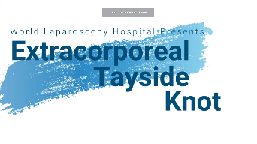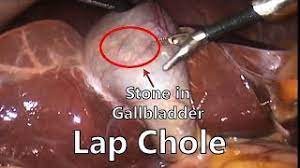Laparoscopic Repair of Para Umbilical Hernia, fully explained for effective treatment
Add to
Share
2,690 views
Report
2 years ago
Description
When it comes to addressing the challenges posed by a paraumbilical hernia, Laparoscopic Repair emerges as a comprehensive and effective solution. This advanced surgical procedure offers a minimally invasive approach to repairing the hernia and provides a thorough understanding of the treatment process for patients and healthcare providers. A paraumbilical hernia occurs when a portion of abdominal tissue protrudes through a weakened area near the umbilicus (belly button). These hernias can be caused by factors such as pregnancy, obesity, aging, or previous surgical incisions. If left untreated, they can lead to discomfort, pain, and potential complications. Laparoscopic Repair involves the use of specialized instruments and a laparoscope, which is a thin, flexible tube equipped with a camera. This camera provides a magnified view of the abdominal cavity, allowing the surgeon to visualize and repair the hernia with precision. During the procedure, small incisions are made near the hernia site, and the laparoscope is inserted to guide the repair process. The surgeon uses mesh, a flexible material, to reinforce the weakened area and provide support to the abdominal tissues. This mesh acts as a barrier, preventing the hernia from recurring while allowing for proper healing. The laparoscopic approach offers several advantages over traditional open surgery. It involves smaller incisions, resulting in less scarring and reduced postoperative pain. Additionally, the magnified view provided by the laparoscope allows for enhanced visualization and precision during the repair, minimizing the risk of complications and promoting faster recovery. In the comprehensive explanation of Laparoscopic Repair for paraumbilical hernia, patients and healthcare providers can expect detailed information about the procedure, including preoperative preparation, the surgical technique itself, and postoperative care. The comprehensive insight covers topics such as potential risks and benefits, expected recovery time, and guidelines for resuming normal activities. Understanding the intricacies of Laparoscopic Repair is crucial for patients, as it enables them to make informed decisions about their treatment and alleviate any concerns they may have. Healthcare providers can also benefit from a thorough understanding of the procedure, allowing them to guide their patients effectively and ensure optimal outcomes. It is important to note that the suitability of Laparoscopic Repair for paraumbilical hernia varies from case to case. The decision to undergo this procedure is based on factors such as the size and location of the hernia, the patient's overall health, and the surgeon's assessment. Laparoscopic Repair of Para Umbilical Hernia offers a detailed and informative exploration of the surgical procedure, providing a thorough understanding of the treatment process. This comprehensive guide covers preoperative preparation, the minimally invasive surgical technique, postoperative care, and expected recovery. By explaining the benefits, risks, and outcomes associated with Laparoscopic Repair, this resource empowers patients and healthcare providers to make well-informed decisions for effective treatment and successful hernia repair. In the realm of hernia treatment, Laparoscopic Repair stands out as a highly effective and minimally invasive approach for addressing paraumbilical hernias. This comprehensive description provides a detailed and informative overview of the procedure, empowering patients and healthcare providers with valuable insights into the treatment process. Laparoscopic Repair involves the use of specialized instruments and a laparoscope, a thin tube equipped with a camera, to repair the hernia through small incisions. The surgeon carefully reinforces the weakened area near the umbilicus (belly button) with mesh, providing long-lasting support and preventing recurrence. This comprehensive description delves into various aspects of Laparoscopic Repair, including the benefits of the minimally invasive approach such as reduced scarring, faster recovery, and decreased postoperative pain. It outlines the preoperative preparations required, the precise steps involved in the surgical procedure, and the expected postoperative care and recovery process. By offering a comprehensive understanding of Laparoscopic Repair for paraumbilical hernia, this description equips patients and healthcare providers with the knowledge needed to make informed decisions. It covers essential details such as the potential risks and complications associated with the procedure, expected outcomes, and guidelines for resuming daily activities. It is important to remember that the suitability of Laparoscopic Repair may vary depending on individual circumstances. Factors such as the size and location of the hernia, overall health, and the surgeon's assessment will influence the treatment approach. Overall, this comprehensive description serves as a valuable resource, providing a thorough exploration of Laparoscopic Repair for paraumbilical hernia. It aims to educate and empower patients and healthcare providers, facilitating informed decision-making and ensuring effective treatment and successful hernia repair. In conclusion, Laparoscopic Repair of paraumbilical hernia offers a comprehensive insight into the treatment process, ensuring effective repair and facilitating a smooth recovery. By embracing this minimally invasive approach, patients can benefit from reduced discomfort, minimal scarring, and a quicker return to their normal daily activities. With a detailed understanding of the procedure, both patients and healthcare providers can approach Laparoscopic Repair with confidence, knowing they are making informed choices for optimal outcomes.
Similar Videos






